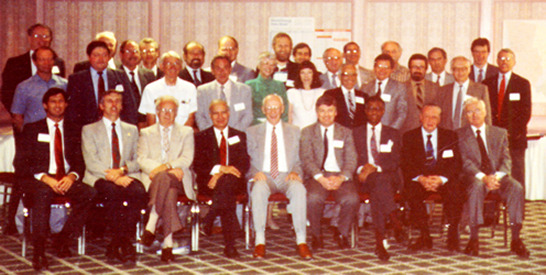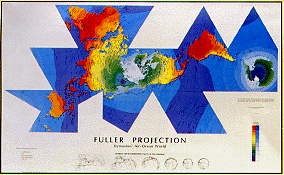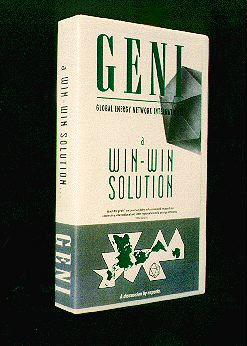
Executive summaryIntroductionRecent
|
|
On the limits of long-
distance high-voltage
power transmission and
the corresponding economic,
environmental, and socio-
political implications. |
Held in Winnipeg, Manitoba, Canada
July 10 - 13, 1991 |
OBJECTIVES
The objective of the Workshop was to appraise the technical, economic, environmental and sociopolitical feasibility of international electrical interchange and its implementation potential on a global basis.
There have been numerous meetings, studies and reports on specific aspects of this issue by technical societies, research institutions and industry sponsored activities. To our knowledge, this Workshop is the first to assemble a group of individuals with diverse backgrounds and geographical origins including professionals and concerned citizens to discuss this issue.
METHODOLOGY
To accomplish this objective, a group of 36 distinguished international multi-disciplined and non-ideological experts were gathered.*
[*The Group included businessmen, economists, cabinet ministers, a former Governor General, officials from the United Nations and the World Bank, academicians, utility executives, environmentalists, and power systems experts. The countries and regions represented include the USA, USSR, Canada, Europe, Latin American, Asia, Africa, the Middle East, Australia and New Zealand.]
The Group was divided into five study committees dealing with the major aspects of this complex problem; these were: Technical, Social/Political, Environmental, Economic, and Implementation. The Committees deliberated for two days separately and then discussed their findings in daily plenary sessions. This provided a Continuing dialogue throughout the Workshop.
PERTINENT INFORMATION
Energy is one of the most important factors in development of the world.
Electrical energy represents over one third of energy use and is growing at a very rapid rate (approximately sevenfold since 1950). It is essential for economic growth, and electric energy use correlates with improved standard of living and quality of life.
The industrialized world (25% of world population) consumes 75-80% of the total electric energy production.
Interconnections have helped to optimize the production and distribution of energy and diminish the impact on natural resources.
Environmental risks due to shortages of energy, particularly electric energy, are significant and can be as high or higher than those associated with the least desirable forms of generation. Example: 80% of Africa,s energy for heating and cooking is met by firewood, resulting in deforestation, desertification and topsoil erosion.
Many untapped renewable resources (especially hydropower) can be developed with minimum environmental costs and greater benefit to developing nations. 34% of untapped resources are in East Asia, 21% in Central Africa and 18% in Latin America.
Advances in hardware technology, large scale system theory, control, monitoring, and computing systems can help optimize the production, transmission, distribution, pricing, trading and billing.
The concept of regional grids has been proven advantageous and is being expanded whenever politically and economically feasible. An example is the discussion to connect West and East Europe, linking the UCPTE network and the COMECON system.
Eventual realization of a global grid requires a balance between transmission losses and cost of regional power generation development. These costs can be evaluated on a project by project basis.
Transmissions losses can be significantly minimized in the future with new technologies which are spin-offs of military and aerospace developments.
 |
International July 10-13, 1991 Winnipeg, |
|
Front Row (left to right): Peter Meisen, Dennis Woodford, —, —, Len Bateman, Peter Dunne, Ahmedou Ould-Abdallah, Don McGillis Middle Row (left to right): Vladimir Kozlov, —, Bill Perk, Lev Belyaev, Muriel Smith, Ludmila Ilyina, Joe Falcom, Alexis Rivero, —, Nikolai Voropai Back Row (left to right): Jim Service, Victor Yershevich, —, Hans Stakegard, Nelson Defranco, Jacque Lemay, Lars Weimer, Walt Venable, —,—,—,—, Segei Roginko, Bob Bulmer |
SUMMARY OF FINDINGS AND RECOMMENDATIONS
JACQUES LEMAY
|
TECHNICAL WORKING GROUP
- HVDC is the preferred type of transmission if the distance involved is more than 1000 kilometers.
- For smaller distance, AC transmission is probably more attractive. The economic voltage for AC depends on the amount of power to be transmitted.
- AC voltages up to 1200 kV and DC voltages up to +750 kV are technically realizable today. Higher values are for tomorrow.
- Limitation on voltage levels may impose some restriction on the practical length that can be considered from an economic point of view. In any case, power transmission per circuit mist be limited to that amount which the receiving system can afford to lose. This is the bottom line.
- Interconnections should form part of the general reinforcement of the AC systems so as to take full advantage of the interconnection.
- The voltage level of a DC interconnection should be as high as practical since it has generally been found that a higher voltage will pay for itself.
- When developing an interconnection, every effort should be made to keep the design as simple as possible.
- Whenever possible, one should try to minimize the number of DC taps and maximize the use of the right-of-way involved in any interconnection project.
- It has been noted that staging has an important influence on the cost of a project and this connection, DC transmission more easily lends itself to profit from this feature.
- Finally, interconnections, especially those involving more than one country, require a mechanisms for the general agreement on planning, design, installation and especially the operation of the interconnected systems.
NELSON DEFRANCO
|
ECONOMICS WORKING GROUP
The economics of electrical supply have been overwhelmingly in favor of continuing with the development of this form of energy transfer. The present standard of living of the developed countries does demonstrate this and suggests the developing countries should be targeted for an improved level of electrical supply. Interconnections will plan an important role in this task. We found:
- The economic benefits have always exceeded the anticipated or assumed values that justified the interconnection in the firs place. Examples Include: Nordel System connecting Scandinavia to Europe, The British Channel underwater link connecting France and England, multiple connections along the US/Canadian border, the USSR system of 9 regional grid systems connecting 7 time zones over 10,000 kilometers. And the recent linking of East and West German took just two months after the Berlin Wall came down because of the substantial economic benefit to both.
- With all the experience represented in the working group, a most significant finding was that not one example was found of an unsuccessful interconnection.
- The system must be reliable, and interconnections help to achieve a greater degree of reliability in the system.
- Huge economic benefits are derived from the availability
of electricity:
- increased reliability, reduction of outages
- the conservation of capital
- better utilization of energy resources
- taking advantage of seasonal (north/south) and time zone (east/west) diversity
- reduction of spinning reserve and other reserve requirements of the system
- assist in the development of new generation resources
- Money from military budgets could be channeled into creating interconnections.
- The evolution of highly developed electrical grids in the industrialized world suggest that a global grid is feasible.
- If the total environmental costs of the thermal station,s air pollution and unknown costs of decommissioning nuclear stations were taken into account, the interconnection of remote renewable energy sources would be significantly more economically viable.
AHMEDOU OULD-ABDALLAH
|
SOCIOPOLITICAL WORKING GROUP
Assuming the Global Energy Network Project is technically and economically feasible, the group:
- Agrees that the project might positively affect the world,s sociopolitical and cultural development. Interconnections will enhance the stability and security between nations.
- Supports the Global Energy Network Project. International interconnections exist today throughout the world, and is not a technology that must wait for future development.
- Recommends its implementation by phases. First between countries of comparable economic development in both the industrialized and developing world. Eventually, world energy can be distributed more equitable.
- Emphasized that any proposal for the extension of international grids between sites, in particular, those of different economic development, need to proceed with great care to ensure each country,s national interests and resources are fully protected.
- Stresses that environmental concerns be fully considered in the implementation of the project. Expanding grids will allow relief from environmentally damaging generation facilities.
- Grid development and electricity availability will help to increase wealth and satisfy human needs, thus stabilizing population growth and migratory populations.
- Calls upon the president of GENI (Global Energy Network Institute) to bring the conclusions of this workshop to the attention of all world leaders, including the Secretary General of the United Nations.
MICHAEL HESSE WOLFE
|
ENVIRONMENTAL WORKING GROUP
The fundamental goal of any grid system is to promote the equitable and efficient distribution of energy. The primary environmental objective is the optimization of international resources, having particular regard to sustainable development, and the use and conservation of energy.
Potential advantages of Energy Grid interconnection: the possibility of reducing required generating capacity thus eliminating the most environmentally unsound generating capacities.
There are negative environmental effects in certain regions that are due to the lack of access to efficient energy sources. A Global Energy Grid is capable of diminishing these environmentally unsound consequences.
We recommend public participation; including affected indigenous peoples, and non-governmental organizations in the planning stages will be crucial for developing support of the project.
Because the Grid will be subject to Global decision making, every effort should be made to draw the attention of intergovernmental bodies to the project. One of the opportunities for this is the United Nations Conference on the Environment and Development in Rio de Janeiro in 1992.
JOE FALCON
|
IMPLEMENTATION WORKING GROUP
We recognize that there are impediments to the implementation of electrical projects. in each geopolitical area of the world. In order to evaluate the degree of complexity, and highlight the major impediments, we have created a typical world implementation chart. The examples are conceptual but we think illustrative.
We have assumed that the projects consist of electrical generation and transmission that cross two or more international boundaries. Implementation of such projects is predicated upon political, and market support. There are few areas in the world where major energy projects can be implemented in the absence of broad based public support.
In reaching our conclusions we have assumed that the technical, economical, sociopolitical and environmental problems are resolvable.
Overriding all other considerations is the necessity of having the appropriate assurances that the money would be available to fund implementation of the projects.
|
|
Major Implementation Problems |
Time 1 Frame |
Market 2 Need |
Degree of 3 Complexity |
|
Africa Zaire-Republic of Central Africa-Sudan-Egypt |
|
2-3 years |
5 |
3 |
|
North America Manitoba-North Dakota- South Dakota-Nebraska |
|
5-10 years |
1 |
5+ |
|
Asia USSR-North Korea- South Korea-Japan |
|
5-10 years |
2 |
5+ |
|
Colombia-Central America-Mexico Colombia-Panama-Costa Rica- Nicaragua-Honduras-El Salvador- Guatemala-Mexico |
|
4-5 years |
2 |
3 |
|
Asia-North America USSR (Siberia)-USA (Alaska) Canada-USA |
|
10-20 years |
1 |
5+ |
|
Europe Norway-Sweden-Finland |
|
3-5 years |
2 |
2 |
|
Gulf States Oman-UAE-Saudi Arabia- Qatar-Kuwait |
|
2 years |
3 |
1 |
1 Time Frame: time from the decision by the proponent to proceed towards approval, until construction can start.
2 Market Need: at anticipated project completion date. 1-5, 5=highly needed
3 Degree of Complexity: 1-5, 5=highly complex
CONCLUSION AND RECOMMENDATION
We believe that the structure and participant diversity of this workshop represent a significant even among the many thoughtful efforts dealing with the optimum production of energy for satisfying the ever increasing demand for electric energy on a global basis with minimum impact on the environment. It is hoped that it will stimulate further discussion and detailed studies by concerned groups around the world.
The Executive Summary has been approved on July 23, 1991 and authorized for distribution by:
|
Ali Seireg, Principal Investigator |
Don McGillis, Chairman Technical Working Group |
Len Bateman, Chairman Economic Working Group |
|
Ahmedou Ould-Abdallah, Chairman Sociopolitical Working Group |
Peter Dunne, Chairman Environmental Working Group |
Jack Cressy, Chairman Implementation Working Group |
Copies of this document, plus additional references are available by contacting GENI.
DELEGATES PARTICIPATING IN MANITOBA HVDC/GENI WORKSHOP:
Ali Seireg - Principal Investigator, University of Wisconsin
TECHNICAL WORKING GROUP
Dennis Woodford - Executive Director, Manitoba HVDC Research Centre
Jacques Lemay - Technical Coordinator, Hydro Quebec
Nikolai Voropai - Deputy Director, Siberian Energy Institute
Jose Carlos Medeiros - Technical Director, CEPEL:, Brazil
Victor Yershevich - Transmission specialist, ENERGOPROYECT
*Don McGillis - System Planning, Hydro Quebec. Working Group Chairman
ECONOMIC WORKING GROUP
Jack Scriven - President, Teshmont Consultants
Lars Weimer - HVDC Power Systems, Asea Brown Boveri
Mike Tarnawecky - Electrical Engineering Department, University of Manitoba
Alexander Malotsov - Director, Energia
Lev Belyaev - Deputy Director, Siberian Energy Institute
Bill Perk - Community Development, Southern Illinois University
*Len Bateman - Bateman Associates, Winnipeg. Working Group Chairman
SOCIOPOLITICAL WORKING GROUP
Michael Hesse Wolfe - International Energy Systems Consultant, Berkeley, California
Edward Schreyer - Resource Management, Simon Fraser University
Ted Glass - Westinghouse Canada, Inc. retired
Yuri Sayamov - First Deputy Chairman, Commission of Soviet Scientists
Bill Moxon - Pacific Institute of Resources Management, New Zealand
Bob Bulmer - Strategic Planning Coordinator, State of Alaska
*Ahmedou Ould-Abdallah - UN Office for Development and International Economic Cooperation. Working Group Chairman
ENVIRONMENTAL WORKING GROUP
Sergei Roginko - Head of the Institute of Europe, USSR Academy of Sciences
Joe Falcon - President-Elect ASME
Ludmila Ilyina - Institute of Geography, USSR Academy of Sciences
Igor Slavin - Director of Science, Radioelectronics Institute
Muriel Smith - United Nations Association, Winnipeg
Ebraheem Alshareedah, Deputy Director, Kuwait Institute of Scientific Research
*Peter Dunne - Former Assistant Minister for Environment, New Zealand
IMPLEMENTATION WORKING GROUP
Jim Service - Transmission System Planning, Ontario Hydro
Hans Stackegard - HVDC Power Systems, Asea Brown Boveri
Will Tishinski - V.P. Facilities Planning, Manitoba Hydro
Vladimir Kozlov - International Fuel & Power Association, Moscow
Ismail Tag - Dean of Engineering, Qatar University
Alexis Rivero - Technical Director, Latin American Energy Organization
Nelson deFranco - Infrastructure Development, World Bank
*Jack Cressy - Chairman, Monenco. Working Group Chairman
THE NEXT STEPS
PEER REVIEW
The results of the International Workshop are currently going through the process of being evaluated by the industry. Comments from Workshop delegates and invited specialists are presently being added to the appendix.
The more extensive review is done through trade organizations and existing think tanks and will take several months. Targeted are IEEE, ASME, ADCE, CIGRE, EPRI, IIASA, Edison Electric Institute, Stanford Research Institute, Rand Corporation, World Health Organization, OTA, USSR Academy of Sciences, Natural Resources Defense Council, The Hunger Project, several United Nations agencies, World Bank, Beyond Way, National Wildlife Federation, to name just a few.
ONGOING US/USSR RESEARCH PROJECT
There were eight Soviets in Winnipeg, and several are very interested in continuing the discussion on linking the US and USSR across the Bering Strait. There are plentiful hydropower and two large tidal sites in Siberia and Alaska which can be developed — delivering abundant and cheap electricity to Japan, Korea, and China. This would also make the production of liquid hydrogen economically feasible.
The Alaskan delegate who works in Governor Hickel's office suggested a roundtable meeting of those especially interested in this proposal. GENI and GENI Alaska could be the catalyst and coordinator for this exchange — doable by the end of the year. This would be the opportunity to get the two superpowers face-to-face, working on a mutually beneficial project... good for both, economically and environmentally
VIDEO DOCUMENTARY
A one hour video documentary needs to be created for mass appeal — ultimately to be shown around the world. Targeted networks are CNN, KPBS, Beyond 2000, the Discovery Channel and similar programs in all countries. Versions will be needed in English, Russian, French, German, Chinese, Japanese, Hindi, Arabic, and Spanish. We have 18 specialists on video tape from the International Workshop who give expert corroboration to the GENI story. We now have two outstanding videos (both 15 minutes) that could be the cornerstone for a full length feature. Funding and sponsors are needed for the intended completion date of December 31, 1991.
GLOBAL 5000
The world's leaders -- 5000 decision makers are set to receive the GENI findings. These people included the United Nations representatives, Secretaries of State and Foreign Ministers, global educators, Fortune 1000 businesses and key world media. These people will form the nucleus for informing all people of the benefits of GENI. The time frame for contact is January/February 1992.
UNITED NATIONS CONFERENCE ON THE ENVIRONMENT AND DEVELOPMENT
Thousands of delegates from 166 nations will gather in Rio de Janeiro, Brazil in June 1992 to set the environment/development agenda for the coming decade. GENI aims to be at the top of the agenda — we're striving for a resolution signed by all countries stating now is the time to work cooperatively on linking international and inter-regional electric energy networks on all continents.
How can I support GENI?
Request:
- GENI Source Document
- Get on the mailing list (get on the emailing list )
Request a GENI Video
- A Win-Win-Solution (expert discussion)
- What if... a new global option (general public)
Discuss this proposal and share the GENI video with friends and business associates. (Use the Tell your friends about this page feature below)
Write a letter to your political leaders, especially the Presidents of the U.S. and the U.S.S.R. and the U.N. Secretary General
Contact your local media regarding a feature story on GENI
Arrange a presentation for GENI at your group's luncheon or trade conference
Contribute money or skills to forward the education of this global opportunity
GENI Support and Products
ONE TIME SUPPORT:I want to help GENI now, |
- GENI
Video:
What if... a new global option
This 15 minute video has been seen around the world. Designed for the general public, it's the best overview of the GENI Initiative. Introduction by John Denver.
- GENI T-shirts (no longer offered)
"Connect the World with GENI" — three color shirt along with Dymaxion™ Map in blue and yellow, Grid and print in red.
- GENI
Brochures
A concise statement on GENI, as well as the benefits in the areas of economics, the environment, international trade and cooperation, hunger and overpopulation. This piece will explain GENI to your firends in 3 minutes.
- GENI
Source Document and Placement on the GENI
Mailing List
You'll receive documentation and support literature on the Global Energy Grid proposal, priority mailing of hardcopy GENI Newsletters, and monthly e-mail updates on the status of this discussion around the world.
 Dymaxion™
Globe
Dymaxion™
Globe
Folded from the Dymaxion™ Map, this four-color 6" globe generates conversation on global issues and solutions.
- New
GENI Video:
A WIN-WIN Solution
A 15 minute discussion by ten delegates who participated in the International Workshop in Winnipeg, Manitoba, Canada in July 1991. The consensus statement strongly corroborated the GENI initiative as very credible.It's a win-win proposal for everyone involved.
Joe Falson
- Working
Group Reports, Maps, Graphs, and Appendix of International
Workshop
Complete set of documents from the 36 delegates who met in Winnipeg, Manitoba, Canada July 1991. $50 donation.

Dymaxion™ MapBeautiful four color poster printed on heavy-gauge paper. 
Promises to generate discussions in your home and office. |
|
ago, the late R. Buckminster Fuller proposed interconnecting regional power systems into a single continuous global electrical energy grid. • While this vision is still years away, tech- nological advances have made the linking of international and inter regional energy networks practicable today. • Transmission lines allow utilities to level the peaks and valleys of demand. This is accomplished between East-West time zones, as well as North-South seasonal variations in demand. • The origin of the energy grid initiative emerged as the highest priority of the World Game™. Its stated purpose is “to make the world work for 100% of humanity in the shortest possible time through spontaneous cooperation without ecological damage or the disadvantage of anyone.” Research reveals that these major benefits will result from expanding electrical networks. • Increase in everyone’s stan- dard of living • Reduction of fossil fuel demand and the resultant pollu- tion • Relief of the population explosion • Reduction of world hunger • Enhancement of world trade • Promotion of international cooperation and peace • The purpose of GENI, Global Energy Network Institute, is to educate all people, especially world leaders, to the potential benefits of this win-win solution. • |
|
UN Secretary- General Javier Perez de Cuellar |
